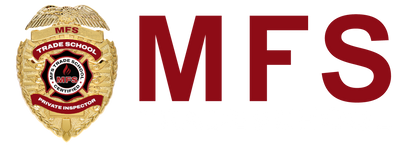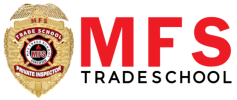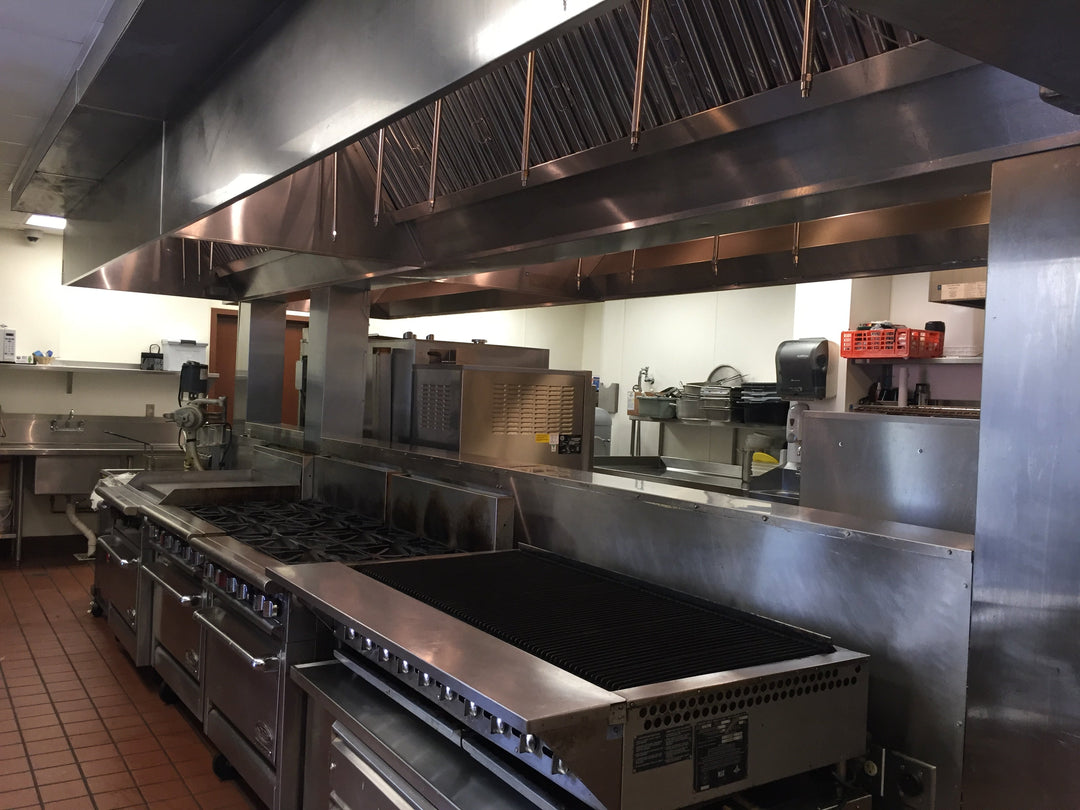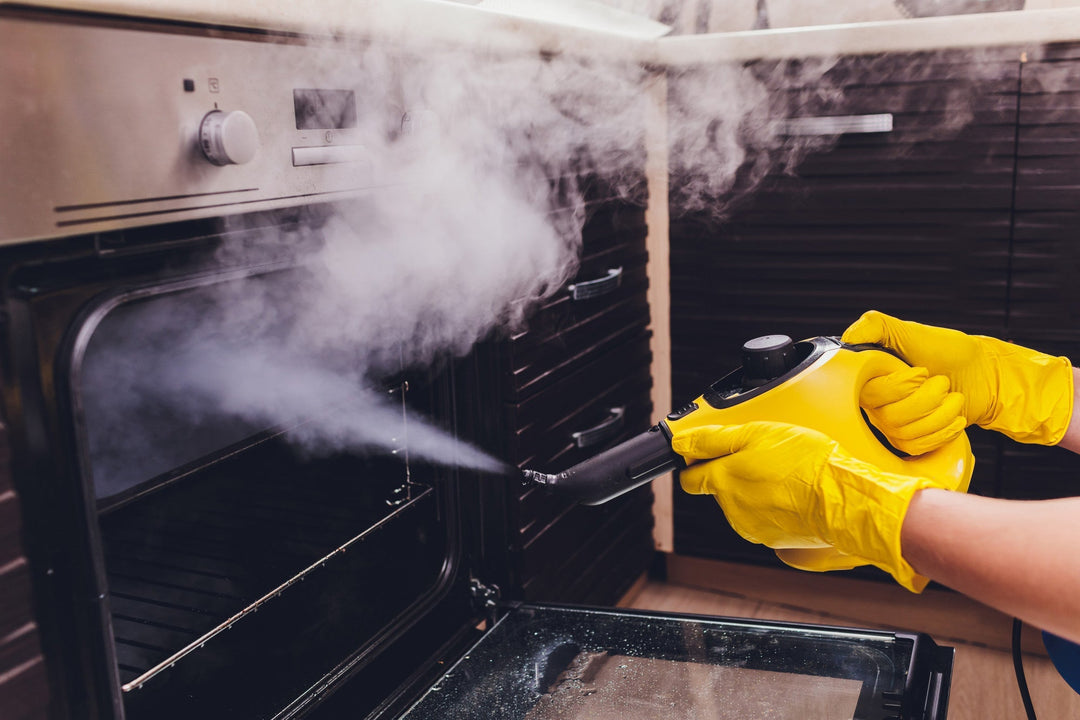ROI Deep Dive: Measuring Cost Savings from Regular Hood Cleaning

Regular hood cleaning is crucial for commercial kitchen operations. The exhaust system, including the range hood and exhaust fan, works hard to remove smoke, heat, and grease particles from the air. To keep this system running smoothly, it needs regular maintenance.
Did you know that 60% of restaurant fires are caused by grease buildup in kitchen exhaust systems? This shocking statistic shows why professional hood cleaning is not just something you have to do - it's an important investment in the future of your business.
The benefits of regular hood cleaning go beyond just safety:
- Less risk of fire
- Longer lifespan for your equipment
- More energy efficiency
- Better air quality
- Following health and safety regulations
But how can you measure the actual return on investment (ROI) from these cleaning services? What specific benefits can you expect from keeping your commercial kitchen exhaust hood clean?
In this article, we will explore the cost savings that come with regular hood cleaning. We will look at real data, examples from the real world, and practical insights to help you understand how proper hood maintenance can impact your finances. You'll learn how this important service can protect your profits while ensuring the safety and efficiency of your commercial kitchen operations.
Moreover, advanced virus disinfection techniques are becoming increasingly important for these establishments to adopt, especially with the rise of foodborne illnesses and viral outbreaks. Implementing effective cleaning protocols not only protects customers but also enhances overall health safety in your establishment.
Additionally, utilizing innovative tools like the MFS Electrostatic Misting Fogger can significantly improve your cleaning efficiency. This versatile battery-operated fogger can mist large areas in seconds, making it a valuable addition to your cleaning arsenal.
It's also crucial to understand that regular equipment maintenance plays a significant role in ensuring the longevity and efficiency of your kitchen appliances. Proper care can boost efficiency, reduce downtime, and save on costly repairs.
Maintaining a clean commercial kitchen exhaust hood not only protects your business from potential fire hazards but also ensures compliance with health and safety regulations. By investing in professional hood cleaning services and adopting advanced cleaning techniques, you can greatly improve the safety and efficiency of your commercial kitchen operations.

Understanding the Financial Impact of Grease Build-up
Grease accumulation in commercial kitchen hoods creates a ticking financial time bomb for business owners. The direct costs of grease-related fires can reach $50,000 to $100,000 in immediate damage, with additional losses from:
- Business interruption and lost revenue
- Property damage repairs
- Equipment replacement
- Legal liabilities
- Increased insurance premiums
- Potential loss of licenses
Financial Penalties for Non-Compliance
The National Fire Protection Association (NFPA) Standard 96 establishes strict requirements for hood cleaning frequency:
- Monthly cleaning for high-volume operations (24-hour restaurants)
- Quarterly cleaning for moderate-volume operations
- Semi-annual cleaning for low-volume operations
Non-compliance with NFPA 96 standards triggers severe financial penalties:
- Initial fines ranging from $500 to $2,500
- Daily penalties for continued violations
- Potential business closure orders
- Invalidation of insurance coverage
- Personal liability for owners/managers
Hidden Costs of Grease Build-up
Hidden costs of grease build-up extend beyond fire risks. Accumulated grease forces exhaust systems to work harder, leading to:
- 20-30% increase in energy consumption
- Reduced equipment lifespan
- Higher maintenance costs
- Poor indoor air quality
- Decreased staff productivity
Consequences of Failed Health Inspections
Health department inspections routinely check hood cleanliness. Failed inspections result in:
- Mandatory closure periods
- Re-inspection fees
- Negative publicity
- Loss of customer trust
- Revenue decline
Impact on Insurance Coverage
Insurance companies closely monitor hood cleaning compliance. Inadequate maintenance can lead to:
- Premium increases up to 50%
- Coverage limitations
- Claim denials
- Policy cancellations
- Difficulty securing future coverage
Mitigating Financial Risks through Training and Practices
To mitigate these risks, proper training in areas such as exhaust cleaning and janitorial services is essential. This could be achieved through specialized courses offered by institutions like MFS Trade School, which also allows you to save your favorite courses for future reference.
Furthermore, implementing practices such as cooking oil filtration can significantly reduce grease build-up in kitchens. Such measures not only ensure compliance with health regulations but also enhance the efficiency of exhaust systems, thereby reducing energy costs and improving indoor air quality.
Maintaining Cleanliness with Quality Cleaning Supplies
In addition to these strategies, investing in high-quality cleaning supplies like a pressure washing hose or an effective freezer cleaner can further aid in maintaining cleanliness and preventing grease accumulation.
Quantifying Cost Savings through Regular Hood Cleaning
Regular hood cleaning creates measurable financial benefits through direct cost reductions and risk mitigation. Let's break down the specific savings you can track:
Insurance Premium Reductions
- Documentation of regular hood cleaning can reduce insurance premiums by 5-15%. This is largely due to improved risk assessment scores with consistent maintenance records, which lower insurance premiums.
- Some insurers offer additional discounts for using certified cleaning services.
Fire-Related Cost Prevention
- Average restaurant fire damage: $23,000-$50,000
- Business interruption losses: $7,000 per day
- Employee wages during closure: $2,000-$5,000 per week
- Legal liability costs from injuries: $100,000+
Implementing proper fire protection systems can further mitigate these risks.
Compliance Cost Savings
- Health inspection fines: $500-$2,500 per violation
- Fire code violations: $1,000-$5,000 per incident
- Operating license suspension costs: $3,000-$10,000 per week
Utilizing professional hood cleaning services not only helps in maintaining compliance but also prevents grease build-up which is a common cause of fire code violations.
Long-Term Financial Benefits
- Extended equipment lifespan: 2-3 years additional service
- Reduced maintenance costs: 15-25% annual savings
- Lower energy bills from efficient operation: 10-20% reduction
- Decreased emergency repair needs: 30-40% reduction
ROI Calculation Formula
Annual ROI = (Cost Savings - Cleaning Investment) / Cleaning Investment x 100
You can track these metrics through:
- Monthly utility bill comparisons
- Equipment maintenance records
- Insurance premium statements
- Compliance inspection reports
- Emergency repair invoices
Professional hood cleaning services typically cost $400-$800 per cleaning session. When compared to potential losses from fires, fines, or equipment failure, this investment creates significant positive returns. A clean hood system pays for itself through reduced operational costs and risk mitigation.
The data shows businesses investing in regular hood cleaning save an average of $12,000-$15,000 annually through combined cost reductions and prevented expenses. These savings compound over time as equipment maintains peak performance and insurance rates remain favorable.

Additional Benefits Beyond Cost Savings
Clean hood systems deliver substantial advantages beyond direct financial savings. Let's explore these key benefits that contribute to your kitchen's success:
Enhanced Energy Efficiency
- Clean exhaust systems require less power to maintain proper airflow
- Reduced strain on HVAC systems leads to lower utility bills
- Clean fans operate at peak performance, consuming optimal energy levels
- Properly maintained systems need fewer repairs and replacements
Improved Kitchen Environment
- Better air quality for staff working conditions
- Reduced heat buildup in cooking areas
- Decreased humidity levels
- Enhanced ventilation performance
Operational Excellence
- Faster cooking times due to improved ventilation
- Reduced equipment downtime
- Better temperature control in cooking areas
- Increased kitchen staff productivity
Food Quality Impact
- Cleaner air leads to better-tasting food
- Reduced cross-contamination risks
- Improved consistency in cooking results
- Enhanced food presentation due to proper ventilation
Equipment Longevity
- Extended lifespan of kitchen appliances
- Reduced wear and tear on ventilation components
- Preserved efficiency of cooking equipment
- Protection of valuable kitchen assets
These benefits create a ripple effect throughout your kitchen operations, enhancing both the working environment and food preparation processes. Clean hood systems contribute to a more efficient, productive, and sustainable kitchen operation that serves both staff and customers better.
Professional Hood Cleaning Services vs. DIY Methods: A Cost-Benefit Analysis
The choice between professional kitchen exhaust hood cleaning services and DIY methods impacts your bottom line in several ways. Let's break down the true costs and benefits of each approach:
Professional Services
- Initial cost: $400-800 per cleaning
- Certified technicians with specialized equipment
- Documentation for insurance and compliance purposes
- Thorough cleaning of hard-to-reach areas
- Time-saving for kitchen staff
- Liability protection
One such professional service includes comprehensive exhaust hood cleaning which covers all necessities for a successful start-up.
DIY Methods
- Initial cost: $150-300 for basic supplies
- Staff time investment: 8-12 hours
- Limited access to professional-grade equipment
- Risk of incomplete cleaning
- No certification documentation
- Potential liability exposure
While DIY might seem cost-effective initially, hidden expenses add up:
- Staff overtime hours
- Purchase and maintenance of cleaning equipment
- Training requirements
- Risk of incomplete cleaning leading to fire hazards
- Potential violations of regulatory standards
Professional services bring expertise in meeting NFPA 96 standards, using specialized tools and chemicals that DIY methods can't match. A professional exhaust hood cleaning service provides:
"Certified technicians use industrial-grade degreasers and pressure washers to clean every component of your exhaust system, from hood to roof-mounted fans."
The thoroughness of professional cleaning extends beyond visible surfaces. Technicians access and clean:
- Horizontal and vertical duct runs
- Plenum spaces
- Fan housings
- Grease collection containers
- Access panels
- Hood filters
Your choice impacts insurance premiums too. Many insurance providers offer reduced rates for businesses using certified professional cleaning services, offsetting the higher upfront costs of professional cleaning through long-term savings.
Additionally, it's worth considering the importance of hygiene in your kitchen environment. Alongside regular hood cleaning, you might want to explore virus disinfecting services offered by professionals, which can further ensure the safety and cleanliness of your workspace by thoroughly protecting it from pathogens.
Determining an Appropriate Cleaning Schedule for Your Kitchen Type
Your kitchen's cleaning schedule depends directly on your operation's volume and cooking methods. Here's a detailed breakdown of recommended cleaning frequencies:
High-volume Kitchens
- Fast-food restaurants
- 24-hour operations
- Establishments using solid fuel cooking
- Heavy wok or charbroiling operations
Required frequency: Monthly cleaning of kitchen hood, exhaust fan, and ventilation system. Regular kitchen exhaust cleaning can improve health ratings and keep your kitchen compliant with health department standards.
Moderate-volume Operations
- Standard restaurants
- Hotels
- School cafeterias
Required frequency: Quarterly cleaning of kitchen exhaust hood and system. It's essential to ensure that these systems are inspected and cleaned by trained professionals as mandated by NFPA Code 96.
Low-volume Operations
- Seasonal businesses
- Churches
- Day camps
- Senior centers
Required frequency: Semi-annual cleaning of kitchen exhaust system. This could be a good time to follow some essential seasonal maintenance tips for kitchen exhaust systems to keep them running efficiently.
Special Considerations
- Solid fuel cooking adds 30-50% more cleaning frequency.
- Grease-heavy cooking styles require additional maintenance.
- Kitchen hood vents in establishments using deep fryers need monthly inspection.
- Kitchen ventilation systems exposed to high humidity need more frequent cleaning.
You can assess your cleaning needs by:
- Measuring grease depth in your kitchen exhaust hood (1/8 inch triggers immediate cleaning).
- Tracking your monthly cooking volume.
- Documenting your primary cooking methods.
- Monitoring grease accumulation patterns.
- Recording any changes in air flow through your kitchen exhaust system.
These factors create a unique cleaning profile for your establishment. Regular inspections of your kitchen hood vent and exhaust components help fine-tune this schedule based on actual usage patterns and grease accumulation rates. If you're considering starting an exhaust hood cleaning business, our Gold Equipment Package has all major equipment needed to start your business including pressure washer, hoses, foam sprayer, chemicals, safety gear & more!
Cost Breakdown for Companies Offering Hood
Strategies for Maximizing Profitability in the Hood Cleaning Industry
1. Embrace Subscription-Based Pricing
Subscription-based pricing models are changing the game for the kitchen hood cleaning industry by creating predictable revenue streams. You can offer tiered packages:
- Basic Plan: Quarterly cleaning of range hood and exhaust hood systems
- Premium Plan: Monthly cleaning plus emergency services
- Enterprise Plan: Custom scheduling for multi-location restaurants
These subscription models encourage long-term client relationships while stabilizing cash flow. Clients benefit from automated scheduling and priority service, reducing the risk of missed cleanings or compliance issues.
2. Optimize Routes with Technology
Route optimization software is transforming traditional hood cleaning operations into efficient, cost-effective services. Modern platforms help you:
- Plan optimal service routes
- Reduce fuel consumption
- Minimize technician idle time
- Track real-time job progress
- Automate scheduling for range hood vent maintenance
Leading software solutions integrate with existing business management tools, creating a seamless workflow from client booking to service completion. The data collected helps identify peak demand periods and optimize resource allocation.
3. Offer Value-Added Services
Profitable hood cleaning businesses combine these technological solutions with value-added services:
- Emergency response capabilities
- Range hood installation consulting
- Preventive maintenance programs
- Digital documentation and compliance reporting
- Training programs for kitchen staff
Implementing a dynamic pricing strategy based on service frequency, kitchen size, and equipment type (vent hood complexity) maximizes revenue potential. Seasonal promotions and multi-location discounts attract larger clients while maintaining healthy profit margins.
4. Enhance Safety and Trust
Moreover, incorporating effective hood cleaning strategies for fire prevention can enhance your service offering. These strategies not only ensure a safe kitchen environment but also promote customer trust and satisfaction.
5. Improve Efficiency with Powerful Products
To further improve your cleaning efficiency, consider using a powerful restaurant hood degreaser which can significantly reduce the time and effort spent on cleaning tasks.
6. Seek Mentorship for Growth
Lastly, seeking mentorship from seasoned industry experts can provide invaluable insights that accelerate your business growth.
Conclusion
Regular hood cleaning is an essential part of effective business management in commercial kitchens. The numbers speak for themselves - with proper cleaning procedures, businesses can save a significant amount of money by:
- Reducing the risk of fires and the damages that come with them
- Lowering insurance costs
- Decreasing expenses for equipment repairs
- Improving energy efficiency
- Enhancing overall performance
The analysis shows that the initial cost of hiring professional hood cleaning services pays off in various areas of business operations. By implementing a cleaning schedule that is specifically designed for your kitchen's needs, you're not just following regulations - you're safeguarding your business assets and ensuring long-term financial stability.
The data tells a powerful story: with commercial kitchen fires causing millions in damages every year, the expense of regular hood cleaning is nothing compared to the potential losses from fire-related incidents. Smart business owners understand that this investment acts as insurance, protecting both their physical assets and their profits.
Remember: A clean hood system isn't just about following rules - it's about creating a safer, more efficient, and more profitable business environment. Choosing between regular maintenance and the possibility of a major loss isn't really a choice at all - it's something every business needs to do.
For those looking to grasp the significance of restaurant cleanliness, it is crucial to understand that health inspectors assess restaurants based on strict cleanliness criteria. This highlights the importance of upholding a clean and sanitary restaurant atmosphere, not only for customer safety but also for overall operational success.
Furthermore, investing in custom video reviews from satisfied customers can be an effective marketing strategy. These personalized testimonials can assist potential clients in making well-informed choices regarding professional hood cleaning services, further highlighting the significance of such an investment.






